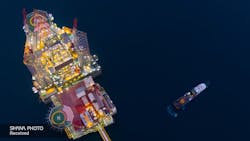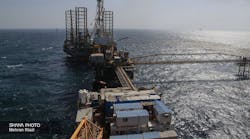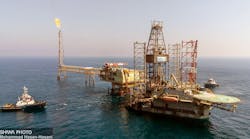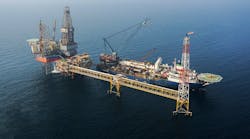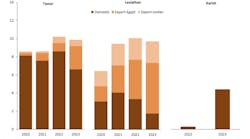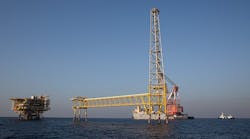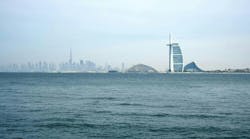POGC intent on widespread pressure boosting at South Pars gas field offshore Iran
Pars Oil and Gas Co. (POGC) has drawn up plans for pressure boosting at seven offshore hubs at the South Pars gas field in the Persian Gulf.
To speed up the process, pressure boosting for the first hub will also be implemented onshore, according to news service Shana.
POGC CEO Touraj Dehqani said South Pars had entered the second half of its predicted lifespan. The new program is designed to prevent anticipated pressure decline, allowing production to continue for more than 20 more years.
With pressure boosting, the closer the equipment is to the source, the greater the long-term value, Dehqani added. But while offshore pressure boosting is the priority, there are some concerns over how quickly this can be implemented versus onshore boosting.
However, offshore execution remains the preferred option in the longer term.
POGC hopes to have the first pressure-boosting hub in place by 2030, connected to South Pars Phase 12 and Phase 11. Onshore pressure boosting here should speed up the development, he added, with an estimated cost of $300 million to $400 million.
South Pars 11 gas well undergoes enhancement measures
Following pressure testing, the acidizing operation took place Dec. 31 using the Deep Cleaner specialist vessel, with the purpose being to maximize well performance and enhance production capacity.
Flowback operations are underway to clean up the well. Work will continue to improve gas flow and productivity and increase daily gas output from Phase 11, the report added.
POGC completes South Pars overhaul campaign offshore Iran
In December 2024, POGC completed overhauls of the gas platforms at the South Pars field.
Ali-Mohammad Tahan, head of HSE at the company’s Operations and Support Division, told news service Shana the program was designed to maximize gas production.
For this year’s campaign, 4,225 work orders were issued, with 2,274 of these completed successfully on the platforms in Zone 1, and the remainder on installations in Zone 2.
Activities included isolating pipelines; replacing 13 32-inch (ESDV and MOV) valves, each weighing about 20 t; replacing seven outlet bends; radiographic testing of lines post-replacement; pressure testing of wells on five platforms; clearing blockages in the flare pilot lines of eight platforms; and installing spark arresters on Platform 7.
Related content: Project updates offshore Iran
Want more content on this region?
Offshore's Middle East Regional Report section of the website provides the latest offshore energy news and project updates from this area.
The editorial team is also publishing a Middle East Regional Report e-book this year. If you're interested in editorial opportunities, reach out to Chief Editor Ariana Hurtado at [email protected] to learn more.
About the Author
Jeremy Beckman
Editor, Europe
Jeremy Beckman has been Editor Europe, Offshore since 1992. Prior to joining Offshore he was a freelance journalist for eight years, working for a variety of electronics, computing and scientific journals in the UK. He regularly writes news columns on trends and events both in the NW Europe offshore region and globally. He also writes features on developments and technology in exploration and production.
